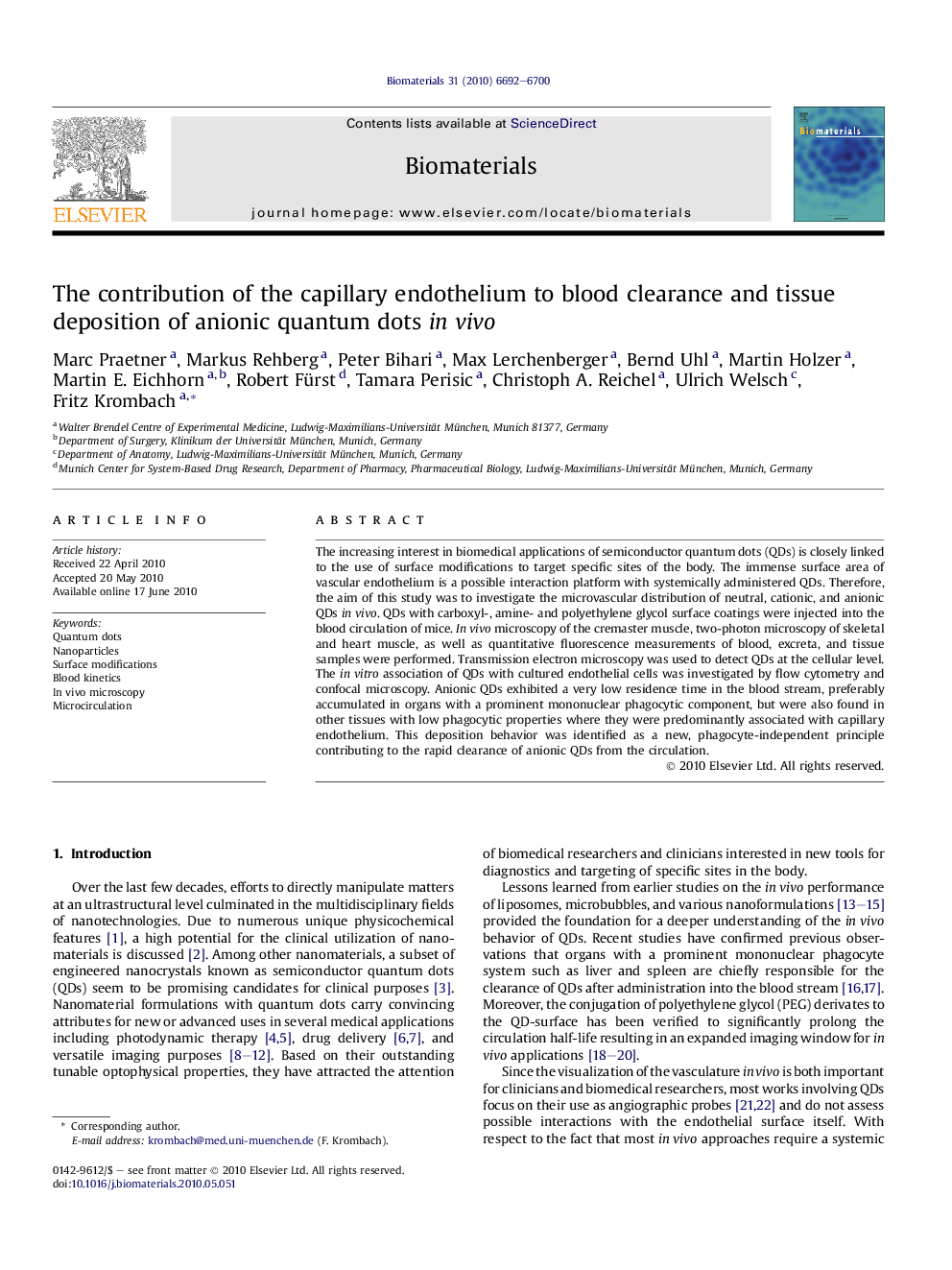| Article ID | Journal | Published Year | Pages | File Type |
|---|---|---|---|---|
| 8704 | Biomaterials | 2010 | 9 Pages |
The increasing interest in biomedical applications of semiconductor quantum dots (QDs) is closely linked to the use of surface modifications to target specific sites of the body. The immense surface area of vascular endothelium is a possible interaction platform with systemically administered QDs. Therefore, the aim of this study was to investigate the microvascular distribution of neutral, cationic, and anionic QDs in vivo. QDs with carboxyl-, amine- and polyethylene glycol surface coatings were injected into the blood circulation of mice. In vivo microscopy of the cremaster muscle, two-photon microscopy of skeletal and heart muscle, as well as quantitative fluorescence measurements of blood, excreta, and tissue samples were performed. Transmission electron microscopy was used to detect QDs at the cellular level. The in vitro association of QDs with cultured endothelial cells was investigated by flow cytometry and confocal microscopy. Anionic QDs exhibited a very low residence time in the blood stream, preferably accumulated in organs with a prominent mononuclear phagocytic component, but were also found in other tissues with low phagocytic properties where they were predominantly associated with capillary endothelium. This deposition behavior was identified as a new, phagocyte-independent principle contributing to the rapid clearance of anionic QDs from the circulation.
